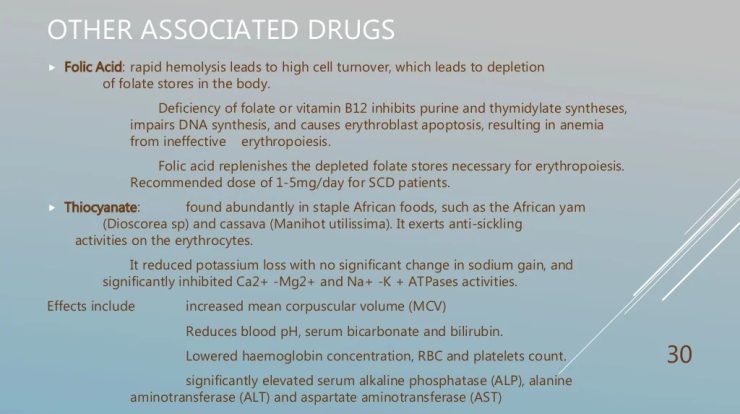NCLEX questions on blood disorders present a captivating challenge for nursing students and professionals alike. This comprehensive guide delves into the intricacies of hematologic disorders, equipping you with the knowledge and understanding to excel in your exams and provide exceptional patient care.
From defining blood disorders and classifying their types to exploring the pathophysiology of blood cell disorders and their clinical manifestations, this guide unravels the complexities of hematology with clarity and precision.
Hematologic Disorders
Blood disorders are a group of conditions that affect the blood and its components, including red blood cells, white blood cells, platelets, and plasma. These disorders can range from mild to severe and can affect people of all ages.
Blood disorders can be classified into three main categories: disorders of red blood cells, disorders of white blood cells, and disorders of platelets.
Disorders of Red Blood Cells
Disorders of red blood cells are characterized by abnormal production, destruction, or function of red blood cells. Examples of these disorders include:
- Anemia: A condition in which the blood does not have enough healthy red blood cells to carry oxygen to the body’s tissues.
- Polycythemia: A condition in which the blood has too many red blood cells.
- Sickle cell disease: A genetic disorder in which the red blood cells are sickle-shaped and can block blood flow.
Blood Cell Pathophysiology
Blood cells are vital components of our circulatory system, playing crucial roles in maintaining homeostasis and protecting the body from infections and diseases. Understanding their functions, production mechanisms, and the pathophysiology of blood cell disorders is essential for healthcare professionals.
Functions of Blood Cells
- Red blood cells (RBCs)carry oxygen from the lungs to tissues and organs, facilitating cellular respiration and energy production.
- White blood cells (WBCs)are part of the immune system, fighting infections and protecting the body from foreign invaders.
- Plateletsare involved in blood clotting, preventing excessive bleeding and promoting wound healing.
Blood Cell Production
Blood cells are produced in the bone marrow through a process called hematopoiesis. Hematopoietic stem cells (HSCs) give rise to all types of blood cells.
- Erythropoiesis:HSCs differentiate into RBCs, which are released into the bloodstream.
- Leukopoiesis:HSCs differentiate into various types of WBCs, including neutrophils, lymphocytes, monocytes, and eosinophils.
- Thrombopoiesis:HSCs differentiate into platelets, which are released from the bone marrow into the bloodstream.
Pathophysiology of Blood Cell Disorders
Blood cell disorders can arise from abnormalities in blood cell production, destruction, or function.
Red Blood Cell Disorders
- Anemias:Conditions characterized by a deficiency of RBCs or hemoglobin, resulting in reduced oxygen delivery to tissues.
- Polycythemia:An excess of RBCs, leading to increased blood viscosity and potential complications.
White Blood Cell Disorders
- Leukopenia:A decrease in WBC count, impairing the immune system’s ability to fight infections.
- Leukocytosis:An increase in WBC count, often indicating an infection or inflammatory response.
Platelet Disorders
- Thrombocytopenia:A deficiency of platelets, increasing the risk of bleeding.
- Thrombocytosis:An excess of platelets, potentially leading to blood clots.
Clinical Manifestations of Blood Disorders
Blood disorders encompass a wide range of conditions affecting the composition and function of blood components, leading to diverse clinical manifestations. This section explores the signs and symptoms associated with specific blood disorders, including anemia, leukemia, lymphoma, and thrombocytopenia.
Anemia
Anemia, characterized by a deficiency in red blood cells or hemoglobin, manifests with a range of symptoms:
- Fatigue and weakness
- Shortness of breath
- Pale skin and mucous membranes
- Rapid heart rate
- Headaches
- Cold hands and feet
- Brittle nails
Leukemia and Lymphoma
Leukemia and lymphoma, both cancers of blood-forming tissues, exhibit distinct clinical presentations:
Leukemia
- Fatigue and weakness
- Frequent infections
- Easy bruising or bleeding
- Swollen lymph nodes
- Bone pain
- Fever
- Night sweats
Lymphoma
- Swollen lymph nodes
- Fatigue and weakness
- Night sweats
- Fever
- Weight loss
- Itching
Thrombocytopenia, Nclex questions on blood disorders
Thrombocytopenia, a condition characterized by low platelet counts, primarily manifests with bleeding:
- Easy bruising
- Nosebleeds
- Gum bleeding
- Heavy menstrual bleeding
- Blood in urine or stool
Diagnostic Evaluation of Blood Disorders
An accurate diagnosis of blood disorders is essential for guiding appropriate treatment and management. A comprehensive diagnostic evaluation typically involves a combination of blood tests, bone marrow biopsy and aspiration, and imaging studies.
Blood Tests
- Complete Blood Count (CBC):Provides information about the number, size, and shape of red blood cells, white blood cells, and platelets, which can indicate various blood disorders.
- Peripheral Blood Smear:Examines individual blood cells under a microscope, allowing for the identification of abnormal cell morphology and the presence of immature or abnormal cells.
- Coagulation Studies:Assess the blood’s ability to clot, which is crucial in diagnosing bleeding disorders and monitoring anticoagulant therapy.
- Immunophenotyping:Uses antibodies to identify specific proteins on the surface of blood cells, aiding in the diagnosis of leukemia and lymphoma.
Bone Marrow Biopsy and Aspiration
Bone marrow biopsy and aspiration involve removing a small sample of bone marrow from the hip bone. This procedure is indicated when blood tests alone are insufficient for diagnosis or when further evaluation of the bone marrow is necessary.
- Bone Marrow Biopsy:Examines the architecture and cellular composition of the bone marrow, providing information about blood cell production and the presence of abnormal cells.
- Bone Marrow Aspiration:Collects liquid bone marrow to assess cell counts, morphology, and the presence of abnormal cells.
Imaging Studies
Imaging studies, such as X-rays, computed tomography (CT) scans, and magnetic resonance imaging (MRI), can be used to evaluate the size and shape of lymph nodes, spleen, and liver, which can be affected by blood disorders.
- X-rays:Can reveal enlarged lymph nodes or masses in the chest or abdomen.
- CT Scans:Provide more detailed cross-sectional images of the body, aiding in the detection of abnormal lymph nodes or masses.
- MRI:Utilizes magnetic fields and radio waves to create detailed images of the body, including the bone marrow and lymph nodes.
Management of Blood Disorders
The management of blood disorders encompasses a range of therapeutic approaches tailored to the specific condition and its underlying cause. Treatment options may include medications, lifestyle modifications, blood transfusions, and in some cases, surgical interventions.
Treatment of Anemia
Anemia, characterized by a deficiency in red blood cells or hemoglobin, requires a comprehensive approach to management. Treatment options may include:
- Iron therapy:Iron supplements are commonly prescribed to address iron deficiency anemia.
- Vitamin B12 injections:Injections of vitamin B12 are necessary to treat pernicious anemia, a condition resulting from a lack of intrinsic factor.
- Erythropoietin injections:These injections stimulate the bone marrow to produce more red blood cells, particularly in cases of chronic kidney disease.
- Blood transfusions:In severe cases of anemia, blood transfusions may be necessary to replenish red blood cells.
Chemotherapy for Leukemia and Lymphoma
Chemotherapy is a cornerstone of treatment for leukemia and lymphoma, malignancies of the blood and lymphatic system. Chemotherapy involves the use of cytotoxic drugs to destroy rapidly dividing cancer cells.
The principles of chemotherapy include:
- Combination therapy:Multiple chemotherapeutic drugs are often used in combination to enhance efficacy and reduce the risk of drug resistance.
- Targeted therapy:Some chemotherapeutic agents specifically target molecules or pathways involved in cancer cell growth and survival.
- Dose adjustment:Chemotherapy doses are carefully calculated based on the patient’s weight, age, and overall health to minimize side effects.
Blood Transfusions for Thrombocytopenia
Thrombocytopenia, a condition characterized by low platelet counts, can lead to excessive bleeding. Blood transfusions play a crucial role in managing thrombocytopenia by replenishing platelet levels.
Platelet transfusions are typically indicated in the following situations:
- Active bleeding:Transfusions can help control bleeding in cases of trauma, surgery, or other medical emergencies.
- Prophylactic therapy:Transfusions may be given before certain procedures, such as surgery or chemotherapy, to prevent bleeding complications.
- Chronic thrombocytopenia:In some cases, patients with chronic thrombocytopenia may require regular transfusions to maintain adequate platelet counts.
Nursing Care for Patients with Blood Disorders: Nclex Questions On Blood Disorders
Nursing care for patients with blood disorders focuses on managing symptoms, preventing complications, and providing supportive care. This includes addressing the underlying cause of the disorder and providing education to patients and their families.
Nursing Interventions for Patients with Anemia
- Administer blood transfusions as prescribed.
- Monitor vital signs, including hemoglobin and hematocrit levels.
- Provide oxygen therapy as needed.
- Encourage rest and activity as tolerated.
- Educate patients on iron-rich foods and supplements.
Supportive Care Measures for Patients Undergoing Chemotherapy
Chemotherapy can cause a variety of side effects, including:
- Myelosuppression (decreased production of blood cells)
- Nausea and vomiting
- Hair loss
- Fatigue
Nursing interventions include:
- Monitoring blood counts regularly.
- Administering anti-nausea medications as prescribed.
- Providing emotional support and counseling.
- Educating patients on side effects and self-care measures.
Importance of Patient Education in Managing Blood Disorders
Patient education is essential for managing blood disorders effectively. This includes:
- Understanding the diagnosis and treatment plan.
- Recognizing and reporting symptoms.
- Adhering to medications and lifestyle recommendations.
- Seeking medical attention promptly when necessary.
Question Bank
What are the most common types of blood disorders?
The most common types of blood disorders include anemia, leukemia, lymphoma, and thrombocytopenia.
What are the signs and symptoms of anemia?
Signs and symptoms of anemia include fatigue, weakness, pale skin, shortness of breath, and dizziness.
What is the treatment for leukemia?
Treatment for leukemia typically involves chemotherapy, radiation therapy, or a combination of both.

